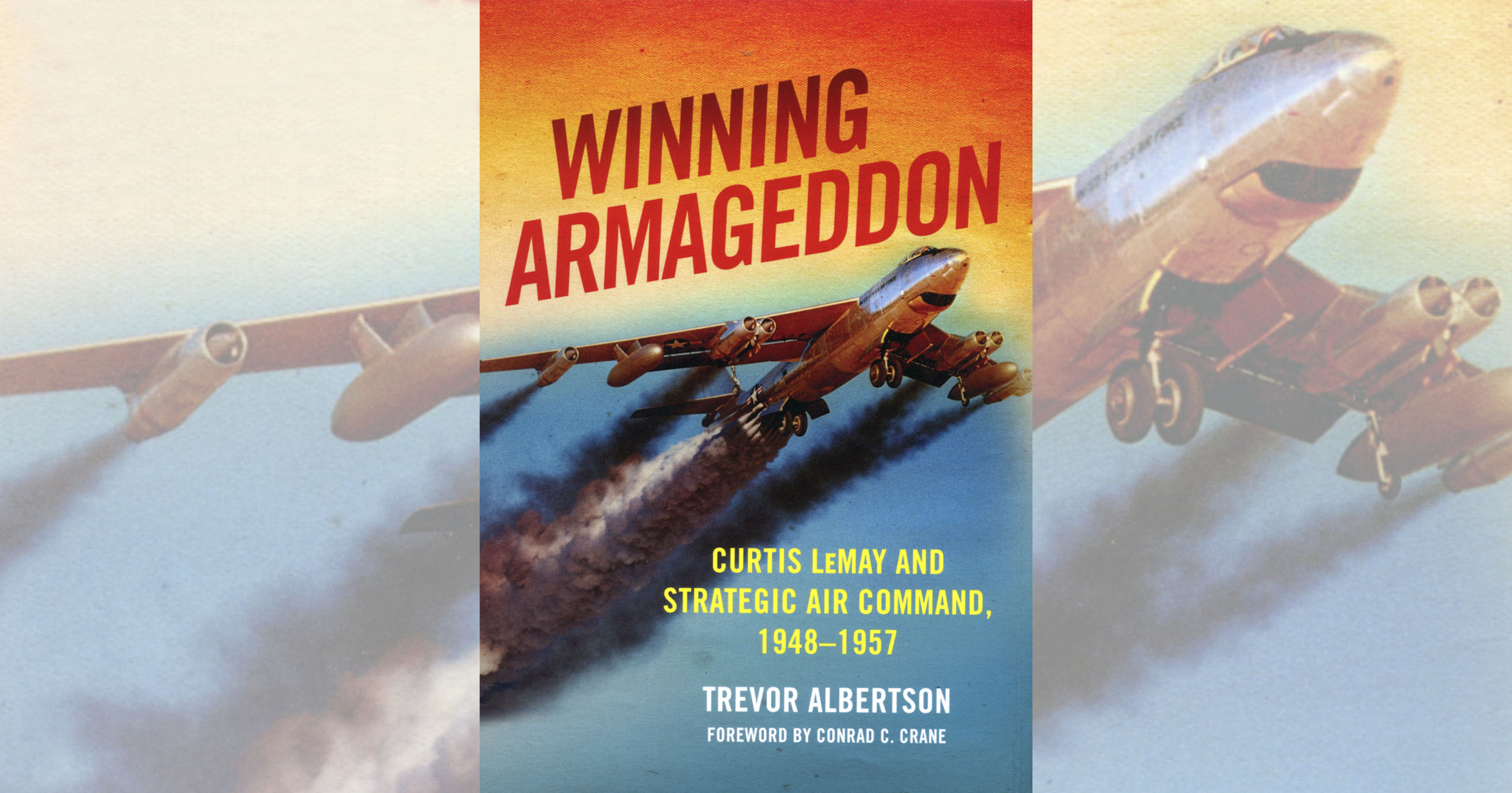Winning Armageddon: Curtis LeMay and Strategic Air Command, 1948–1957, by Trevor Albertson, Naval Institute Press, 2019, $40.
Almost as soon as World War II was won, America found itself challenged by its recent ally, the Soviet Union, in a generational rivalry that would come to be known as the Cold War. The contest between superpowers was complicated by both sides possessing nuclear arsenals capable of turning the planet into a wasteland. Trevor Albertson, a former U.S. Air Force officer and the current dean of instructional services at Lassen College in California, offers a new analysis of the influence of Air Force General Curtis LeMay during the Cold War’s early years.
Unquestionably, LeMay was a larger-than-life character who, as the hard-charging leader of Strategic Air Command from its infancy in 1948 through its emergence as the world’s premier striking force in 1957, was ripe for parodying in the years to come. But Albertson provides a rounded treatment of the air commander by acknowledging his doggedness in pursuit of victory while pointing to softer aspects of his life that included a penchant for racing cars, frequent trips with friends and insistence on decent housing and recreational opportunities for the men under his command. The book’s main contribution is to draw attention to LeMay’s hardline position during the Cold War that the U.S. should not rely on the official policy of deterrence and retaliation, but instead should strike first if a Soviet attack was imminent.
In fact, LeMay argued privately and publicly for this doctrine of preemptive war. Basically, the experienced warrior and strategist believed that the only way to come out ahead in a nuclear matchup was to land the initial blow. Fortunately for the world that never happened, and the superpower stare-down eventually ended not with a blast but a poof.
This article appeared in the September 2020 issue of Aviation History. To subscribe, click here!

